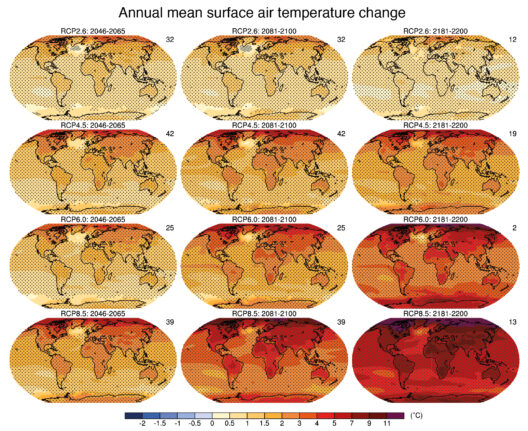The phenomenon of increasingly cloudy days has become a prominent topic of discourse among climatologists and environmental enthusiasts alike. These seemingly innocuous shifts in atmospheric conditions can be imbued with profound implications for our planet’s climate. As global temperatures rise, a cascade of environmental changes unfolds, hinting that more cloudy days may not just be an incidental observation but a harbinger of broader climatic shifts.
At first glance, frequent overcast skies might appear as typical meteorological variations, yet they evoke a deeper fascination regarding their causality and consequences. The interplay of clouds and climate is a complex tapestry woven from numerous threads, including atmospheric temperature, moisture content, and anthropogenic influences. As greenhouse gases accumulate in the atmosphere, altering temperature gradients, an increase in cloud cover emerges not merely as an ephemeral lapse in sunshine, but as an indication of larger, systemic changes.
Clouds serve multifaceted functions in the Earth’s climate system. They act as regulators of solar radiation, mediating the amount of sunlight that reaches the ground. More pronounced cloud formations can contribute to the greenhouse effect by trapping heat, resulting in warmer surface temperatures. Conversely, increased cloudiness can reflect sunlight, leading to a cooling effect in specific regions. The balance of these interactions becomes increasingly precarious as the climate warms. Hence, the proliferation of clouds offers critical insight into the dynamics of climate change.
One must also consider the thermodynamic principles governing cloud formation. As the atmosphere warms due to anthropogenic emissions of carbon dioxide and other greenhouse gases, the capacity of air to hold moisture increases. Warmer air can sustain greater amounts of water vapor, which in turn influences cloud formation. This process can lead to thicker, more persistent cloud layers that dominate the skies, sealing off sunlight and exacerbating the cooling effect in the lower atmosphere. While this phenomenon initially presents as a temporary reprieve from scorching temperatures, it orchestrates cascading climatic repercussions.
Additionally, the types of clouds that emerge and their behavior can signal deeper climatic changes. For instance, the prevalence of low-lying stratus clouds may indicate changes in local humidity and temperature patterns. Conversely, vertical cumulus clouds might suggest increases in convection activity, which is often linked to heightened levels of atmospheric instability. Tracking these occurrences allows scientists to model and predict future climate scenarios more accurately. Consequently, more cloudy days might serve as an indicator of shifting climatic norms, particulate pollution levels, and surface temperature fluctuations.
Another compelling aspect resides in the potential feedback mechanisms associated with increased cloud cover. As more clouds generate a cooling effect at the surface, they may inadvertently contribute to a delay in the temperature increase achieved by greenhouse gas emissions. This creates a complex dilemma in which clouds can obscure the immediate impacts of global warming, leading to a false sense of reprieve. Such phenomena complicate climate projections and risk underestimating the amount of warming anticipated.
Moreover, the impact of anthropogenic activities cannot be disregarded. Urbanization and industrialization contribute to air pollution, which in turn affects cloud properties. Aerosols emitted by cars and factories can serve as nuclei for cloud formation, resulting in changes in the cloud’s microphysical and radiative properties. Regions with significant industrial activity often experience higher levels of cloud cover, intermingling the effects of climate change with local pollution. Thus, the relationship between increased cloudy days and climate change becomes interlaced with the ramifications of human activities.
Yet, while more cloudy days do not singularly equate to climate change, their correlation with rising temperatures exemplifies the multifaceted nature of the climate crisis. This relationship showcases the cascading effects that arise as a result of a warming planet. Efficiently addressing climate change requires understanding the interdependencies among various climatic factors, including cloud dynamics. Comprehensive climate models must incorporate these relationships to yield accurate forecasts that prioritize adaptation and mitigation strategies.
Furthermore, public awareness of these atmospheric changes is quintessential. Heightened visibility of cloudy skies can evoke discussions surrounding the climate crisis in local communities. Such dialogue can galvanize grassroots movements and strengthen advocacy efforts aimed at reducing carbon footprints and promoting sustainability. As personal observations and scientific research align, the narrative surrounding climate change will grow from abstract to tangible, influencing policy decisions and societal behaviors.
In summation, while more cloudy days might be perceived as an innocuous alteration in weather patterns, they denote significant fluctuations within the Earth’s climate system. Understanding the relationship between increased cloud cover and climate change necessitates a nuanced exploration of atmospheric dynamics. These shifts are symptomatic of a larger, intricate web of interrelated elements. Recognizing how clouds serve as both indicators and agents of climatic variability is paramount in comprehending climate change’s breadth. Engaging with these issues is not merely an academic exercise; it is a clarion call for collective action regarding the health of our planet and future generations.







